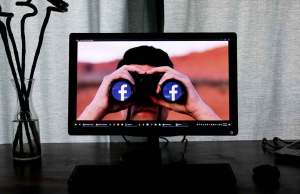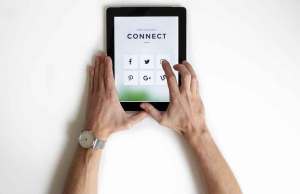Social media was made to connect—it’s primary purpose being to enable communication and foster an interconnectedness amongst us that never existed before. And while it may have accomplished that mission to some degree, it also came with some serious drawbacks, or as some may say, side effects: like harrowing feelings of loneliness and isolation.
Finding the Proper Balance
Caleb Backe, Health and Wellness Expert for Maple Holistics, explains just how social media—an invention made to connect—can leave many of us feeling more disconnected than ever before: “It’s amazing how much time we can spend on social media in a day, even though most of us consider ourselves to lead busy lives. For many of us, the need to keep up with social media stems from a fear of experiencing exclusion. But when you cut back on social media and start interacting face to face with other people, you won’t feel as excluded because you’ll no longer know what’s happening in everybody else’s lives,” he explains. “Social media can create the illusion that everybody else is out partying when in reality they’re all desperately trying to feel included just like you.”
So, while social media can be instrumental in communicating and keeping up with your friends and family, it’s certainly a tricky balance: “Social media can be a great way to keep up connections, but if it is your only form of social connection, you are probably going to experience loneliness,” says Backe. “As human beings, we need face to face social interactions in our lives, whether we realize it or not. So, does cutting back on social media reduce loneliness? Yes, but only if you replace that time that you would’ve spent on social media connecting with other people in real life.”
Staying Connected: Tips and Benefits
In summary, you have to be careful about how much time you invest in social media—and you’ll undoubtedly benefit from redirecting some of that time, attention, and energy into spending time with your friends and family face-to-face. Dr. Jeremy Nobel, founder of The Foundation for Art and Healing, delves further into these risks that come with feelings of loneliness and social isolation, as well as the benefits of spending real time with others:
“We know that loneliness and social isolation increases risk for depression, substance abuse, and suicide, as well as increasing risk of early death by 30%, on par with smoking 15 cigarettes a day! Spending time socializing with others reduces these risks to health and also allows us to experience the experiential upside of positive relationships that are not only life-extending but life-enhancing,” Nobel explains. “Almost every research study on what makes us happy and content identifies relationships with a host of others be they family, friends, neighbors, or colleagues as the leading predictor and causal factor for achieving those goals. So, as you can see, the benefits of time with others in positive social interaction conveys significant health benefits and increased life expectancy while also making all those extra years enjoyable!”
Now, how can you truly connect with your loved ones? “Any activity that allows us to spend enjoyable time with others is likely to be beneficial, but certain activities convey additional benefit as they foster an authentic sense of more intimate connection that is both durable and sustainable,” Nobel explains. “These intimacy-generating activities achieve connection not by the activities per se, but by the sharing of personal thoughts, feelings, and perspectives, allowing others to see us as the complex individuals we all are, while at the same time allowing us to appreciate them. These activities themselves can be simple,” he says, such as…
- Walking on the beach or in the woods
- Enjoying a film or artistic performance
- Visiting the local art museum
- Going to see live music
Those are just a few ideas, what’s really important is that you spend time in conversation, “sharing your reactions to what you’ve seen and experienced and listening attentively to what is shared back to you by whomever you are with,” according to Nobel. “This active and interactive exchange is like the closing of an electric circuit and a connection is achieved that pushes back against the loneliness and social isolation that otherwise burdens us.”













